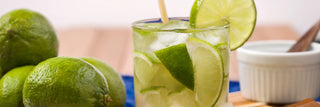What is cachaça and what is hidden behind its flavor? Surely you have tried this liquor in a caipirinha , a Brazilian cocktail par excellence, but perhaps you do not know exactly its origin and what it is composed of. We explain it to you below.
What is cachaça or cachaça?
It is one of the best-selling liquors in the world and comes from Brazil. It is obtained from the distillation of fermented sugar cane juice and is known by various names such as; pinga, la malvada, branquinha, caxaca or chacha.
This famous drink is also called “Brazilian rum” , but the difference with conventional rum is that it is made with molasses.
The origin of cachaça
According to history, cachaça had its origin when sugar cane arrived in Brazil, thanks to the Portuguese colonizers, around the 16th century.
It is said that it was the owners of the plantations who gave the fermented juice obtained after boiling the cane to obtain sugar to the slaves so that they could work better and endure the hard days of work.
After a few years, the preparation of this drink was perfected and was no longer exclusive to slaves. It attracted other consumers from the Brazilian colony and began to gain notoriety in the economy, something that alerted the Portuguese that there they sold a brandy called “Bagaceira” and cachaça posed a threat to its sale, which is why it was banned in Bahia.
It was in the year 1756, when the first Brazilian cachaça was bottled, in the city of Igarassu, in the Pernambuco interior.
Although attempts were made to stop production on all sides, this liquor won the battle and, in the 19th century, its consumption increased and there was even a period of insufficient production due to the increase in demand.
Artisanal and industrial cachaça
Today, cachaça is no longer produced in sugar factories, but in small or large distilleries in Brazil. There are two types:
The artisanal one, made by small Brazilian producers located in Minas Gerais, Paraty and Pirassununga, in Sao Paulo, who are considered the best. They use corn flour, called "Fubà", to ferment the cane juice and these cachaças are generally aged to obtain a more intense flavor and better quality.
For its part, industrial cachaça is manufactured by large production companies that sell the distillate to bottlers and, generally, it is not aged.
Caipirinha or caipirinha
The star of Brazilian cocktails . Its fame is worldwide and it is increasingly conquering more and more palates thanks to the flavor of cachaça mixed with lemon or lime juice, sugar and ice. Its name was given approximately in 1900 and results from the union of two words “caipira” and “curupirinha” . The first in reference to the peasants and the second to a demon that, in ancient belief, lived in the forests of Brazil.
Due to its internationalization, caipirinha has various ways of preparation, but cachaça is always the essential ingredient. It is a unique cocktail that, without a doubt, identifies all Brazilians and was considered, in 1918, a medicine against the flu epidemic that attacked the country.


